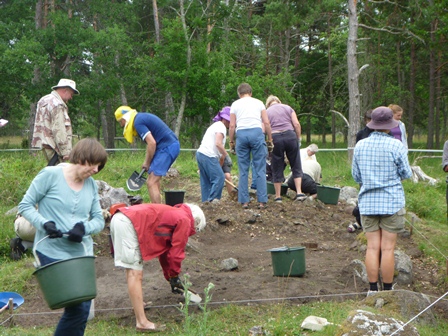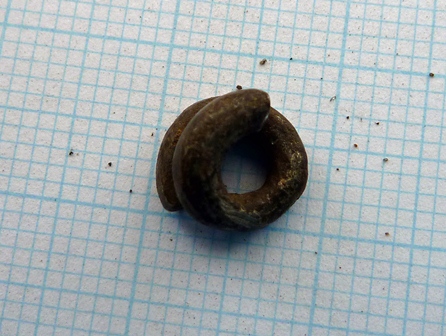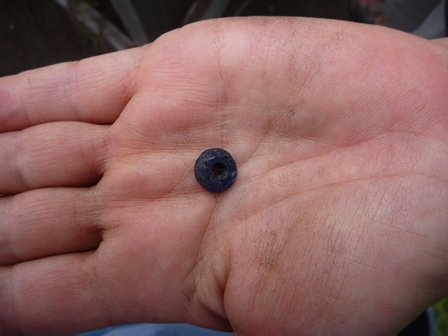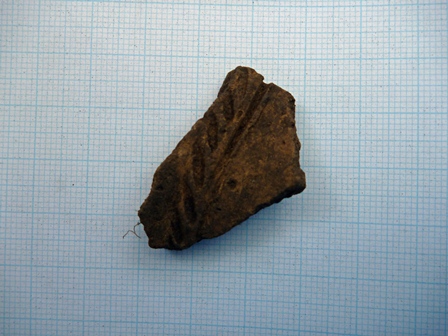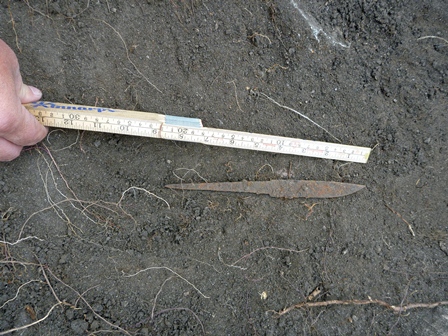The first week was Tuesday to Saturday, with a planned excursion on the Sunday. The planned excursion went on a little longer then expected, covered way way more ground (literally) then expected, and quite a wide variety of history.
Week 2 started on the monday and goes until friday. So .... no real downtime between the weeks.
My inner introvert had a small panic attack during the excursion, but I hid out all evening so I'm much better now.
I should preface a description of the week's archaeology with the idea that we were digging trial trenches to see if we can find evidence of a Viking Age harbour in Slite. Dan's reasoning seems sound, but we have no proof. This is what we are trying to back up with archaeology.
So.... it was pretty hit and miss.
BUT.... it was fun anyway!
Our first trench was 2 metres by 3 metres, and we had 6 people, one in each square metre. Partway through, one of our people had to bow out as it proved that her new and improved knees couldn't take the punishment. We all pitched in to finish the 6th square.
Neil and I were a bit concerned at first that it didn't seem like there was a lot of instruction. But that did quickly improve. And we're asking a lot of questions.
Two squares proved to be really interesting of the six. My square in the north east corner of the trench and Konrad's square in the south east corner.
Konrad's square had the right side of a cow's mandible and teeth, and some big stones in the bottom of the trench that may or may not be part of a construction, although they think it unlikely for a variety of reasons.
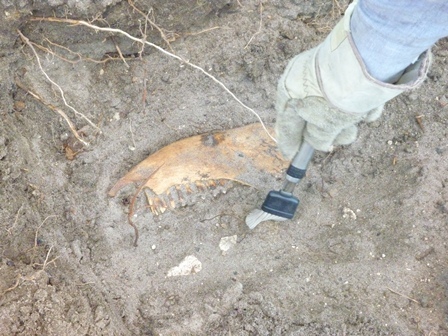
My square seems to have a wide variety of rubbish like finds, throughout many layers in the north east corner, with some kind of limestone in the walls, and packed clay near the bottom of the trench.
All in all, I found a plastic button, what is likely a BBQ ash box, oodles of glass (window, bottles, two jars of shoe cream), iron nails and rivets, ceramic (shaped pottery, glazed pottery, and porcelian), various animal bones, a couple of very tiny clay pipes, broken clay bits (possibly both pots and bricks), and an absolute ton of flint.
Here's Snorri trying to puzzle it out while still in the ground.
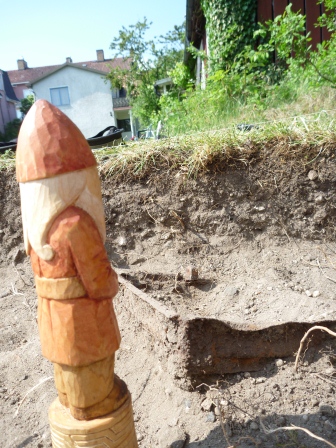
And me with my prize after it finally got dug out. It was visible in Layer 2 but I had to finish evening out the layer and leave it until we could get to Layer 3. It was somewhat frustrating walking away from it! And it's clearly not Viking Age.
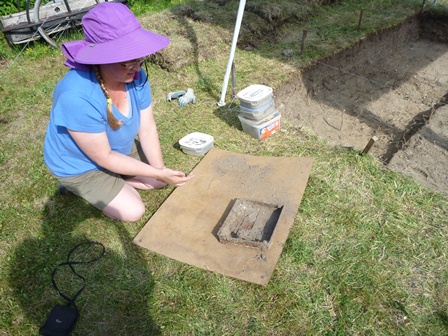
This is possibly the single largest piece of flint that we dug up - weighing in at 320g all by itself, and it's only one piece. Collectively, we came up with something in the order of 10kg of flint in Trench 1 alone. The other trenches also had quite a bit of flint show up.
I should put this in perspective - flint isn't native to Gotland. So it begs the questions - who brought it in, when, and why?
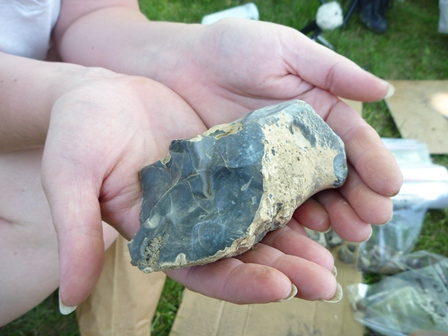
One piece of clay might be Viking Age. Maybe. But the square is so mixed up, it's hard to tell if that means anything.
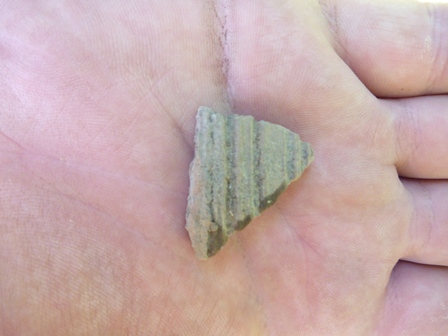
The two jars of shoe cream are definitely Viking shoe cream. We know that because it says so on the bottom of the jar. :) Although apparently, I didn't get a picture of it.
We drew the profile of the walls on Monday, and closed up the trench on tuesday. We started two new squares in Trench 7 on tuesday afternoon and pretty finished it by the end of the day. We starting hitting pure sand, and there were very few finds in a 50cm depth.
There was a lecture on Monday night about the bronze age in Gotland. Dan Carlsson is trying to branch out the educational historical focus from the Viking Age as it has been in previous years. Bad timing for Neil and I to be here! But as a friend said to me earlier this week "it's all archaeology".
Which is why I found my rubbish heap of a square in Trench 1 to be so exciting to dig!
Wednesday, we both dug out and closed squares 2 - 4 in Trench 7. We found zilch in squares 3 and 4 but it was really easy to dig, being almost entirely sand. Squares 2 and 3 were..... annoying. Lots and lots of big (but not big enough to be interesting for more than 10 minutes) .... rocks. Rocks, rocks, and more rocks. There was some good natured muttering under the breath about the humanity of the lead archaeologist by the end of the day. :)
Wednesday night's lecture was about the excavations in Västergarn, which was really quite interesting. It's really close to, and historically related to another place called Paviken, which has some evidence for bead-making. Bead-making is one of Neil's specialities in the Viking Age.
At some point this week, we had a bit of excitement in one of the other group's trenches. Trench 6 produced what many speculated might be a possible Viking grave.
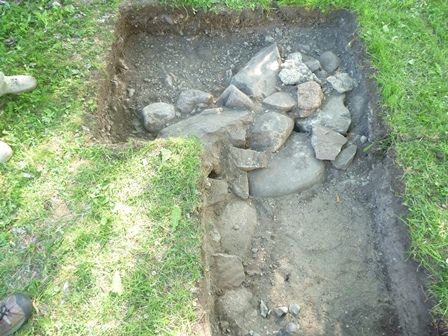
But by the end of the week, we knew it to be a well, and the lead archaeologist thinks it belongs to the 18th century at the earliest. So crushing...
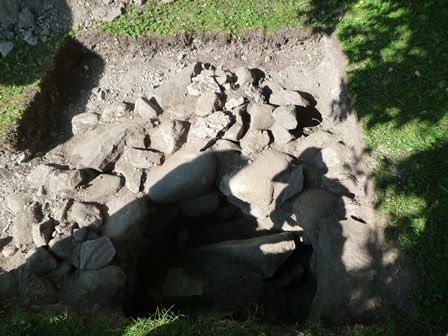
Since our group had finished up our trenches on Wednesday, we all went out to Burs, in southern Gotland, for a new adventure on Thursday.
Dan called this "rescue archaeology" - given that Gotland is just loaded with archaeological remains, every time someone wants to do something different to their land, they have to call in an archaeologist. Dan was called to do a survey of a field in which the farmer wanted to add a crayfish pond. He walked the field with a metal detector and came up with 10 silver coins in a small area of the field. So he arranged a big dirt-moving machine to lift the turf and called us in for help. We were to help find more coins, and then to hunt through a rather large trench for postholes (evidence of habitation - building construction). In one day.
And oi vey, was it ever hot out.
Fortunately, the day ended up consisting mostly of following Dan around with the metal detector and picking coins out of the dirt where he pointed, carefully digging up the central "hoard" area (more on that in a bit) and quickly coming to the conclusion visually that there were no postholes. We were all wilting from very little physical activity by the end of the day because the heat was so incredible and there was no shade in the field.
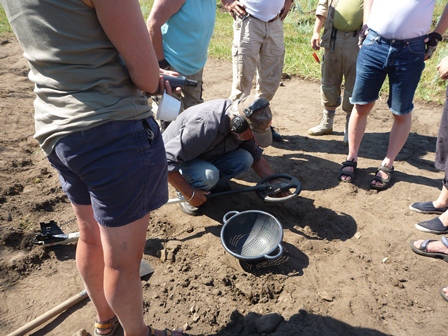
But! we found a silver hoard!
We (the group of 12 of us) found some 40 odd silver coins in the field throughout the day and we called in a numismatologist (coin expert) to dig up the final central "hoard" area. He brought along his wife and small child, and right there, in the wilting heat, proceeded to go through all 40 coins and tell us the approximate date and geography of each. And then, finally, turned his attention to the hoard. He pulled up 3 of the coins that were sitting on the top of the soil, carefully brushed away for him, and then decided that it could possibly go quite a bit deeper and this should be done carefully in the lab.
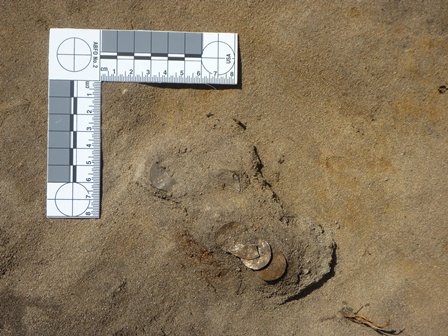
So....we (the students) made a small column of sand, wrapped it in plaster, and cut it from the field with a string, loaded it on a board and put it in Dan's car.
Snorri thinks it's his birthday!
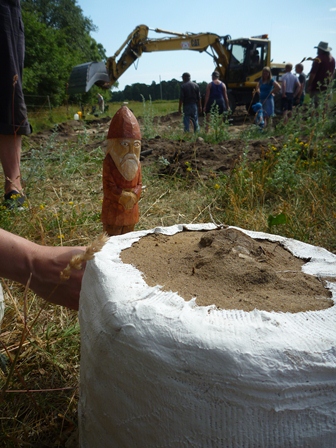
Dan's assistant finished the processing of the "hoard" on friday and we learned there were another 20 odd coins buried in the top 2-3cm. The latest coin in the hoard was dated to 1009-1017 so the poor fellow who lost his purse walking home one night (probably drunk) did so sometime after the turn of the century.
This is the work at the beginning of friday - we learned about the results at lunch.
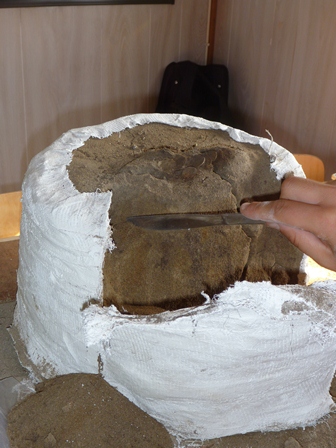
Okay..... that wraps up the first two weeks! I will try to not take so long in between posts next time!
